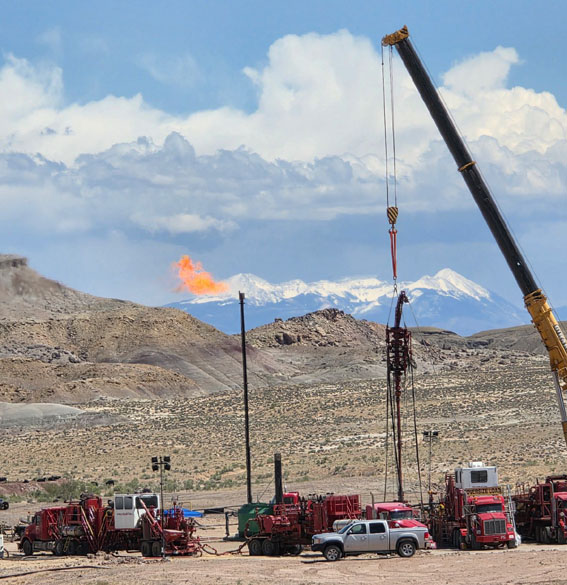Zephyr Energy provides initial results from the production test on the State 36-2 LNW-CC-R well at the Company's flagship project in the Paradox Basin, Utah, U.S.

During the production test, the well was tested at multiple flow rates in order to gather data to determine the flow capacity of the well, to provide an early estimate of potential resource volumes, and to obtain high quality fluid samples. We are pleased to report that the production test successfully delivered on all these key objectives, and, most importantly, the test data gathered suggests that there is more than sufficient deliverability for a commercial well.
Initial production test observations include:
- A peak rate of 2,848 barrels of oil equivalent per day (“boepd”) (11.9 million standard cubic feet per day (“mmscf/d”) and 856 barrels of oil per day (“bopd”)) on a 18/64-inch choke setting, which was achieved with no material drop in bottom hole pressure.
- During a separate, planned 48-hour period of stable flow, the well delivered steady production rates averaging 3-4 mmscf/d and 200-400 bopd (700-1,066 boepd total), at a choke setting of 8/64-inch, with no material drop in bottom hole pressure.
- Well test data and interpretation suggest that there is more than sufficient well deliverability for a commercial well.
- Data gathered from a fibre optic cable run along the length of lateral suggests that inflow of hydrocarbons across the length of the lateral is occurring, indicating the potential for a much larger reservoir volume to be drained compared with the initial completed interval of 130 feet in the previous production test (as announced on 6 September 2024).
- Elevated condensate-yields were observed (in a range of 60-200 barrels of oil (“bo”) per million standard cubic feet (“mmscf”) with an 85 bo/mmscf average). While liquid yields will vary across the field area and in time as the reservoir pressure drops during field production, the overall elevated liquid yields are expected to be a significant driver of enhanced project economics.
- Water cut was less than 0.5% throughout the duration of the test. This continued evidence of limited water production is another potential boost to the well's economics by reducing the need for expensive water disposal processes.
- Produced gas and condensate fluid samples have been collected and a detailed fluid laboratory analysis is currently underway to further characterise the field's fluid fill and composition.
The well test results suggest that the chosen completion strategy (hydra-jet abrasive perforation and matrix acidisation) was highly successful, and the test data results fit well with the Company’s P50 estimate of reservoir properties. It should be noted that no fracture stimulation was performed to achieve this excellent well deliverability result. Fracture stimulation could offer further upside potential for both the well, and for the broader Paradox project development.
Further results from the production test, including estimated ultimate recoveries, will be announced when available.
Colin Harrington, Zephyr's Chief Executive, said:
“I could not be more pleased with the initial results from this latest production test. Our team has worked exceptionally hard to crack the code to deliver highly economic production from this under-explored basin, and with today’s news I believe we have made huge strides forward.
While the early results on this single well are fantastic and demonstrate commerciality, I am even more encouraged when considering the potential implications for the broader development of our Paradox project.”
KeyFacts Energy Industry Directory: Zephyr Energy
 KEYFACT Energy
KEYFACT Energy